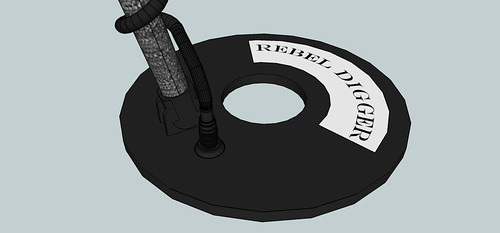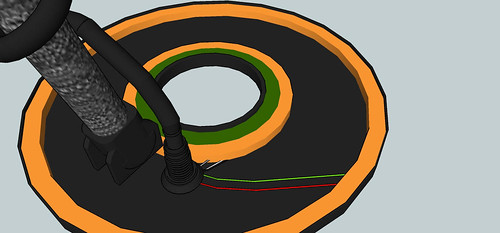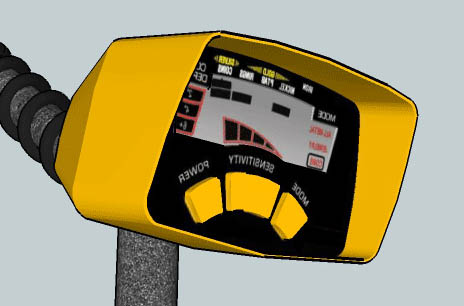There are many good explanations on how a VLF metal detector operates available all over the web. They range from very hi-tech to not so much. When I decided that I needed to have a better understanding of all the voodoo involved I knew that I would be wading through some very heady material that I was going to have problems wrapping my head around. So here are the conclusions I have drawn based on my own research I hope I've been able to lay it out in a clear and concise manner that you can understand. If you have anything of value to add, corrections or ideas please comment and let me know.
Quick overview of a typical VLF (Very Low Frequency) Metal Detector
The Search Coil / Head
The guts of the search head consists of two coils made of copper. One coil is the “transmit” coil and the other is the “received” coil.These are normally written as TX Coil and RX Coil. These coils are electrically separate from each other (As in they don’t touch each other) and exit the search head via a normally waterproof connector that runs along a set of wires up into the control box.
The Control box
The erm “Brain” of the machine. To be honest this little box will be your friend but also your worst enemy, well at least at the start anyway. Internally the control box consists of the detectors circuitry, batteries, control knobs, buttons, speaker and maybe a visual display of some kind. Different brands or detector will have varying names for the functions of a their detector. But VLF metal detectors as a rule of thumb have the ability to produce a noise relative to your target via the control boxes internal speaker or via a set of headphones. Ability to discriminate targets based on their conductivity. With a lot of modern machines you also get a visual display the shows numbers indicating your target this differs depending on the brand of detector you're using and even how deep it is (More on this later because nothing in life is that simple). We now know the parts that make up the detector we can have a look at how the thing actually works. The control box generates an electromagnetic field in the transmit coil. As you swing your detector over a metallic object that object interacts with the magnetic field this change in the magnetic field in picked up by the RX coil. The change received by the RX coil is slightly different depending on the conductivity and size of the target. These changes are processed by the control boxes circuits. On moderns machines much of the analyse is carried out by a processor. The processor contains software that is developed by manufactures for their machines this software is a closely guarded secret. But in general the signals generated and received are analysed by complex algorithms that are designed to give better separation between targets and also better identification of those targets.




No comments:
Post a Comment